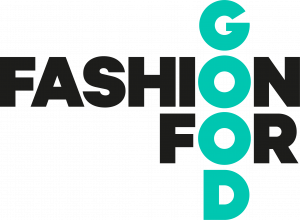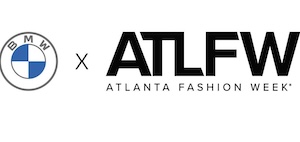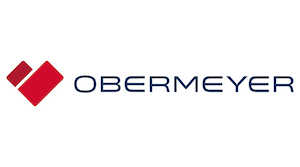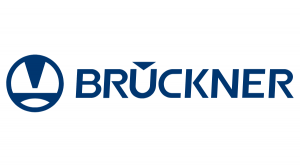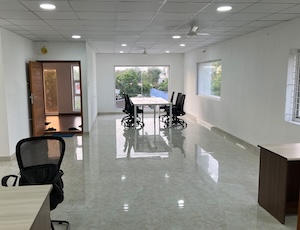 TEMPE, Ariz. — June 2, 2025 — Economic activity in the manufacturing sector contracted in May for the third consecutive month, following a two-month expansion preceded by 26 straight months of contraction, say the nation’s supply executives in the latest Manufacturing ISM® Report On Business®.
TEMPE, Ariz. — June 2, 2025 — Economic activity in the manufacturing sector contracted in May for the third consecutive month, following a two-month expansion preceded by 26 straight months of contraction, say the nation’s supply executives in the latest Manufacturing ISM® Report On Business®.
The report was issued today by Susan Spence, MBA, Chair of the Institute for Supply Management® (ISM) Manufacturing Business Survey Committee:
“The Manufacturing PMI® registered 48.5 percent in May, 0.2 percentage point lower compared to the 48.7 percent recorded in April. The overall economy continued in expansion for the 61st month after one month of contraction in April 2020. (A Manufacturing PMI® above 42.3 percent, over a period of time, generally indicates an expansion of the overall economy.) The New Orders Index contracted for the fourth month in a row following a three-month period of expansion; the figure of 47.6 percent is 0.4 percentage point higher than the 47.2 percent recorded in April. The May reading of the Production Index (45.4 percent) is 1.4 percentage points higher than April’s figure of 44 percent. The index continued in contraction in March for the third straight month after two months of expansion preceded by eight months of contraction. The Prices Index remained in expansion (or ‘increasing’) territory, registering 69.4 percent, down 0.4 percentage point compared to the reading of 69.8 percent in April. The Backlog of Orders Index registered 47.1 percent, up 3.4 percentage points compared to the 43.7 percent recorded in April. The Employment Index registered 46.8 percent, up 0.3 percentage point from April’s figure of 46.5 percent.
“The Supplier Deliveries Index indicated a continued slowing of deliveries, registering 56.1 percent, 0.9 percentage point higher than the 55.2 percent recorded in April. (Supplier Deliveries is the only ISM Report On Business index that is inversed; a reading of above 50 percent indicates slower deliveries, which is typical as the economy improves and customer demand increases.) The Inventories Index registered 46.7 percent, down 4.1 percentage points compared to April’s reading of 50.8 percent.
“The New Export Orders Index reading of 40.1 percent is 3 percentage points lower than the reading of 43.1 percent registered in April. The Imports Index plunged into extreme contraction in May, registering 39.9 percent, 7.2 percentage points lower than April’s reading of 47.1 percent.”
Spence continues, “In May, U.S. manufacturing activity slipped further into contraction after expanding only marginally in February. Contraction in most of the indexes that measure demand and output have slowed, while inputs have started to weaken:
Demand indicators were mixed, with the New Orders and Backlog of Orders indexes contracting at slower rates, while the Customers’ Inventories and New Export Orders indexes contracted more strongly. However, a ‘too low’ status for the Customers’ Inventories Index is usually considered positive for future production.
Regarding output, the Production Index increased from an alarmingly low reading the previous month, but factory output continued to contract in May, indicating that panelists’ companies are still revising production plans downward amid economic uncertainty. The Employment Index ticked up for a second consecutive month but remained in contraction, as head-count reductions continued. Companies generally opted for layoffs because they are quicker to implement than attrition.
Finally, inputs are defined as supplier deliveries, inventories, prices and imports. The Inventories Index, as expected, entered contraction territory after expanding as companies completed pull-forward activity ahead of tariffs, while the Supplier Deliveries Index indicated continuing slow performance, reflecting ongoing delays in clearing goods through ports of entry. Tariffs-induced prices growth slowed slightly, while the Imports Index contracted significantly, down 7.2 percentage points compared to April.
“Looking at the manufacturing economy, 57 percent of the sector’s gross domestic product (GDP) contracted in May, up from 41 percent in April. The share of manufacturing GDP registering a composite PMI calculation at or below 45 percent is a good metric to gauge overall manufacturing weakness; in May, this figure was 5 percent, a 13-percentage point decrease compared to the 18 percent in April. Of the six largest manufacturing industries, two (Petroleum & Coal Products and Machinery) expanded in May, compared to four in April,” says Spence.
The seven manufacturing industries reporting growth in May — listed in order — are: Plastics & Rubber Products; Nonmetallic Mineral Products; Petroleum & Coal Products; Furniture & Related Products; Electrical Equipment, Appliances & Components; Fabricated Metal Products; and Machinery. The seven industries reporting contraction in May, in order, are: Paper Products; Wood Products; Printing & Related Support Activities; Food, Beverage & Tobacco Products; Transportation Equipment; Chemical Products; and Primary Metals.
What Respondents Are Saying
“There is continued softening of demand in the commercial vehicle market, primarily related to higher prices and economic uncertainty. The impact of ever-changing trade policies of the current administration has wreaked havoc on suppliers’ ability to react and remain profitable. Vehicle manufacturers have already rolled price increases into their products to protect their bottom lines but have not been as cooperative with their supply bases. This has resulted in a high occurrence of suppliers falling into financial distress.” [Transportation Equipment]
“Tariffs, avian influenza and broader commodity markets continue to impact business conditions. The volatility of all three makes business planning and overall conditions challenging.” [Food, Beverage & Tobacco Products]
“Government spending cuts or delays, as well as tariffs, are raising hell with businesses. No one is willing to take on inventory risk.” [Computer & Electronic Products]
“Most suppliers are passing through tariffs at full value to us. The position being communicated is that the supplier considers it a tax, and taxes always get passed through to the customer. Very few are absorbing any portion of the tariffs.” [Chemical Products]
“Tariff uncertainty is impacting new international orders. Tariffs are also the main reason our Asia customers are requesting delayed shipments.” [Fabricated Metal Products]
“There is continued uncertainty regarding market reaction to the recently imposed tariffs and resulting actions by other countries. The rare earth restrictions being imposed are of high concern in the near term.” [Machinery]
“The administration’s tariffs alone have created supply chain disruptions rivaling that of COVID-19.” [Electrical Equipment, Appliances & Components]
“We have entered the waiting portion of the wait and see, it seems. Business activity is slower and smaller this month. Chaos does not bode well for anyone, especially when it impacts pricing.” [Primary Metals]
“Tariff whiplash continues while the easing of tariff rates between the U.S. and China in May was welcome news, the question is what happens in 90 days. We are doing extensive work to make contingency plans, which is hugely distracting from strategic work, plus it is also very hard to know what plans we should actually implement. The 10-percent tariff on other countries is impactful as well, and it is unclear if/when deals will be made.” [Miscellaneous Manufacturing]
“Uncertainty due to the recent tariffs continue to weigh on profitability and service. An unresolved (trade deal with) China will result in empty shelves at retail for many do-it-yourself and professional goods.” [Paper Products]
MANUFACTURING AT A GLANCE
May 2025 |
| Index |
Series
Index
May |
Series
IndexApr |
Percentage
Point
Change |
Direction |
Rate of
Change |
Trend*
(Months) |
| Manufacturing PMI® |
48.5 |
48.7 |
-0.2 |
Contracting |
Faster |
3 |
| New Orders |
47.6 |
47.2 |
+0.4 |
Contracting |
Slower |
4 |
| Production |
45.4 |
44.0 |
+1.4 |
Contracting |
Slower |
3 |
| Employment |
46.8 |
46.5 |
+0.3 |
Contracting |
Slower |
4 |
| Supplier Deliveries |
56.1 |
55.2 |
+0.9 |
Slowing |
Faster |
6 |
| Inventories |
46.7 |
50.8 |
-4.1 |
Contracting |
From Growing |
1 |
| Customers’ Inventories |
44.5 |
46.2 |
-1.7 |
Too Low |
Faster |
8 |
| Prices |
69.4 |
69.8 |
-0.4 |
Increasing |
Slower |
8 |
| Backlog of Orders |
47.1 |
43.7 |
+3.4 |
Contracting |
Slower |
32 |
| New Export Orders |
40.1 |
43.1 |
-3.0 |
Contracting |
Faster |
3 |
| Imports |
39.9 |
47.1 |
-7.2 |
Contracting |
Faster |
2 |
| OVERALL ECONOMY |
Growing |
Slower |
61 |
| Manufacturing Sector |
Contracting |
Faster |
3 |
Manufacturing ISM® Report On Business® data is seasonally adjusted for the New Orders, Production, Employment and Inventories indexes.
*Number of months moving in current direction.
Commoditites Reported Up/Down In Price And In Short Supply
Commodities Up in Price
Aluminum (18); Aluminum Products* (3); Corrugated Boxes (3); Critical Minerals (3); Electrical Components (4); Electronic Components (4); Paper Products; Steel (4); Steel — Stainless (3); and Steel Products (3).
Commodities Down in Price
Aluminum Products*; Cooking Oils; Diesel Fuel (2); Natural Gas (3); and Polypropylene.
Commodities in Short Supply
Electronic Components (3); and Rare Earth Components.
Note: The number of consecutive months the commodity is listed is indicated after each item.
*Indicates both up and down in price.
May 2025 Manufcaturing Index Summaries
Manufacturing PMI®
The U.S. manufacturing sector contracted in May for the third consecutive month after two months of expansion preceded by 26 months of contraction. The Manufacturing PMI® registered 48.5 percent, 0.2 percentage point lower compared to the 48.7 percent reported in April. “The Manufacturing PMI decreased to its lowest reading since November, when it registered 48.4 percent. Of the five subindexes that directly factor into the Manufacturing PMI, only one (Supplier Deliveries) was in expansion territory, down from two in April. Slower supplier deliveries have been driven by tariff concerns and advancing material deliveries; such shipments slowed or stopped after tariffs were deployed, leading to a drawdown of manufacturing inventories. Although the Employment and New Orders indexes both improved for the second consecutive month, they remained in contraction. Of the six biggest manufacturing industries, two (Petroleum & Coal Products; and Machinery) registered growth,” says Spence. A reading above 50 percent indicates that the manufacturing sector is generally expanding; below 50 percent indicates that it is generally contracting.
A Manufacturing PMI above 42.3 percent, over a period of time, generally indicates an expansion of the overall economy. Therefore, the May Manufacturing PMI indicates the overall economy grew for the 61st straight month after last contracting in April 2020. “The past relationship between the Manufacturing PMI and the overall economy indicates that the May reading (48.5 percent) corresponds to a change of plus-1.7 percent in real gross domestic product (GDP) on an annualized basis,” says Spence.
THE LAST 12 MONTHS
| Month |
Manufacturing
PMI® |
Month |
Manufacturing
PMI® |
| May 2025 |
48.5 |
Nov 2024 |
48.4 |
| Apr 2025 |
48.7 |
Oct 2024 |
46.9 |
| Mar 2025 |
49.0 |
Sep 2024 |
47.5 |
| Feb 2025 |
50.3 |
Aug 2024 |
47.5 |
| Jan 2025 |
50.9 |
Jul 2024 |
47.0 |
| Dec 2024 |
49.2 |
Jun 2024 |
48.3 |
| Average for 12 months – 48.5
High – 50.9
Low – 46.9 |
New Orders
ISM’s New Orders Index contracted in May for the fourth consecutive month after three consecutive months of expansion, registering 47.6 percent, an increase of 0.4 percentage point compared to April’s figure of 47.2 percent. This reading is below the 12-month moving average (48.6 percent) for the New Orders Index, which hasn’t indicated consistent growth since a 24-month streak of expansion ended in May 2022. “Of the six largest manufacturing sectors, two (Petroleum & Coal Products; and Machinery) reported increased new orders. Panelists noted weakening demand, with a 1-to-1.5 ratio of positive comments versus those expressing concern about near-term demand. Overall, new orders continue to slow, as which party will pay for potential tariff costs is still the prime topic of negotiations between buyers and sellers. A lack of new orders from overseas customers is also a key factor,” says Spence. A New Orders Index above 52.1 percent, over time, is generally consistent with an increase in the Census Bureau’s series on manufacturing orders (in constant 2000 dollars).
The eight manufacturing industries that reported growth in new orders in May, in order, are: Apparel, Leather & Allied Products; Plastics & Rubber Products; Petroleum & Coal Products; Nonmetallic Mineral Products; Electrical Equipment, Appliances & Components; Furniture & Related Products; Fabricated Metal Products; and Machinery. The seven industries reporting a decline in new orders in May, in order, are: Paper Products; Wood Products; Food, Beverage & Tobacco Products; Primary Metals; Computer & Electronic Products; Chemical Products; and Miscellaneous Manufacturing.
| New Orders |
%Higher |
%Same |
%Lower |
Net |
Index |
| May 2025 |
25.0 |
48.1 |
26.9 |
-1.9 |
47.6 |
| Apr 2025 |
28.1 |
45.2 |
26.7 |
+1.4 |
47.2 |
| Mar 2025 |
19.9 |
56.8 |
23.3 |
-3.4 |
45.2 |
| Feb 2025 |
20.3 |
62.4 |
17.3 |
+3.0 |
48.6 |
Production
The Production Index remained in contraction territory in May, registering 45.4 percent, 1.4 percentage points higher than the April reading of 44 percent. Prior to the readings of expansion in January and February, the index was in contraction territory for eight consecutive months, with the previous reading above 50 percent in April 2024 (50.7 percent). Of the six largest manufacturing sectors, two (Machinery; and Computer & Electronic Products) reported increased production. “Production levels in May, while slightly improved, are still fragile as order books remain weak and new orders continue to decline. Food, Beverage & Tobacco Products; Transportation Equipment; and Chemical Products declined strongly, causing head-count reductions at factories. Panelists noted reduced output in production due to business-climate uncertainty, with a 3-to-1 ratio of negative to positive comments,” says Spence. An index above 52.1 percent, over time, is generally consistent with an increase in the Federal Reserve Board’s Industrial Production figures.
The seven industries reporting growth in production during the month of May — in the following order — are: Plastics & Rubber Products; Nonmetallic Mineral Products; Electrical Equipment, Appliances & Components; Miscellaneous Manufacturing; Fabricated Metal Products; Machinery; and Computer & Electronic Products. The eight industries reporting a decrease in production in May, in order, are: Paper Products; Textile Mills; Primary Metals; Wood Products; Furniture & Related Products; Food, Beverage & Tobacco Products; Transportation Equipment; and Chemical Products.
| Production |
%Higher |
%Same |
%Lower |
Net |
Index |
| May 2025 |
19.1 |
56.3 |
24.6 |
-5.5 |
45.4 |
| Apr 2025 |
19.8 |
56.0 |
24.2 |
-4.4 |
44.0 |
| Mar 2025 |
21.0 |
58.1 |
20.9 |
+0.1 |
48.3 |
| Feb 2025 |
16.5 |
68.9 |
14.6 |
+1.9 |
50.7 |
Employment
ISM’s Employment Index registered 46.8 percent in May, 0.3 percentage point higher than April’s reading of 46.5 percent. “The index posted its fourth consecutive month of contraction after expanding in January, with seven straight months of contraction before that. Since May 2022, the Employment Index has contracted in 30 of 37 months. Of the six big manufacturing sectors, one (Petroleum & Coal Products) reported expanded employment in May. Respondents’ companies continue to reduce head counts through layoffs, attrition and hiring freezes; an approximate 1-to-1.4 ratio of hiring versus staff-reduction comments reflects an acceleration of head-count reductions due to uncertain near- to mid-term demand. Layoffs were the primary measure, an indication that staff shrinking continues to be urgent,” says Spence. An Employment Index above 50.3 percent, over time, is generally consistent with an increase in the Bureau of Labor Statistics (BLS) data on manufacturing employment.
Of the 18 manufacturing industries, the four reporting employment growth in May are: Nonmetallic Mineral Products; Petroleum & Coal Products; Primary Metals; and Fabricated Metal Products. The nine industries reporting a decrease in employment in May, in the following order, are: Apparel, Leather & Allied Products; Textile Mills; Plastics & Rubber Products; Wood Products; Machinery; Miscellaneous Manufacturing; Computer & Electronic Products; Transportation Equipment; and Chemical Products.
| Employment |
%Higher |
%Same |
%Lower |
Net |
Index |
| May 2025 |
14.1 |
68.2 |
17.7 |
-3.6 |
46.8 |
| Apr 2025 |
13.1 |
70.7 |
16.2 |
-3.1 |
46.5 |
| Mar 2025 |
8.3 |
73.7 |
18.0 |
-9.7 |
44.7 |
| Feb 2025 |
12.0 |
70.9 |
17.1 |
-5.1 |
47.6 |
Supplier Deliveries†
Delivery performance of suppliers to manufacturing organizations was slower for the sixth consecutive month in May, with the Supplier Deliveries Index registering 56.1 percent, a 0.9-percentage point increase compared to the reading of 55.2 percent reported in April. This continued expansion follows a contraction (which indicates faster delivery performance) in November, preceded by four consecutive months of slower deliveries. After a reading of 52.4 percent in September 2022, the index went into contraction territory the following month and remained there for 20 out of 21 months, with February 2024 the exception. Of the six big industries, three (Food, Beverage & Tobacco Products; Chemical Products; and Computer & Electronic Products) reported slower supplier deliveries in May. “The main reasons that deliveries continued to be strained were (1) suppliers struggled to meet accelerated delivery requests from panelists’ companies, (2) materials were delayed in processing at ports of entry and (3) suppliers and panelists’ companies are haggling over who pays for applied tariffs,” says Spence. A reading below 50 percent indicates faster deliveries, while a reading above 50 percent indicates slower deliveries.
The 10 manufacturing industries reporting slower supplier deliveries in May — in the following order — are: Textile Mills; Plastics & Rubber Products; Food, Beverage & Tobacco Products; Paper Products; Electrical Equipment, Appliances & Components; Furniture & Related Products; Primary Metals; Chemical Products; Miscellaneous Manufacturing; and Computer & Electronic Products. The two industries reporting faster supplier deliveries in May are: Fabricated Metal Products; and Machinery.
| Supplier Deliveries |
%Slower |
%Same |
%Faster |
Net |
Index |
| May 2025 |
19.1 |
73.9 |
7.0 |
+12.1 |
56.1 |
| Apr 2025 |
16.6 |
77.2 |
6.2 |
+10.4 |
55.2 |
| Mar 2025 |
13.4 |
80.2 |
6.4 |
+7.0 |
53.5 |
| Feb 2025 |
14.9 |
79.1 |
6.0 |
+8.9 |
54.5 |
Inventories
The Inventories Index registered 46.7 percent in May, down 4.1 percentage points compared to the reading of 50.8 percent reported in April, entering contraction territory for the first time since February. “This reading in contraction territory indicates that the pull forward of materials by companies to minimize the financial impacts of tariffs is largely completed. Of the six big industries, two (Computer & Electronic Products; and Machinery) expanded in May,” says Spence. An Inventories Index greater than 44.5 percent, over time, is generally consistent with expansion in the Bureau of Economic Analysis (BEA) figures on overall manufacturing inventories (in chained 2000 dollars).
Of 18 manufacturing industries, the six industries reporting higher inventories in May — listed in order —are: Furniture & Related Products; Plastics & Rubber Products; Textile Mills; Primary Metals; Computer & Electronic Products; and Machinery. The six industries reporting lower inventories in May — listed in order — are: Food, Beverage & Tobacco Products; Paper Products; Chemical Products; Miscellaneous Manufacturing; Electrical Equipment, Appliances & Components; and Fabricated Metal Products. Six industries reported no change in inventories.
| Inventories |
%Higher |
%Same |
%Lower |
Net |
Index |
| May 2025 |
15.6 |
63.2 |
21.2 |
-5.6 |
46.7 |
| Apr 2025 |
20.8 |
59.2 |
20.0 |
+0.8 |
50.8 |
| Mar 2025 |
21.5 |
65.7 |
12.8 |
+8.7 |
53.4 |
| Feb 2025 |
14.6 |
72.4 |
13.0 |
+1.6 |
49.9 |
Customers’ Inventories†
ISM’s Customers’ Inventories Index registered a reading of 44.5 percent in May, a decrease of 1.7 percentage points compared to the reading of 46.2 percent in April. “Customers’ inventory levels in May continued to contract and moved further from ‘about right’ territory. Panelists are reporting that the amounts of their companies’ products in their customers’ inventories continue to suggest a demand level that remains positive for future production,” says Spence. (For more information about the Customers’ Inventories Index, see the “Data and Method of Presentation” section below.)
The three industries reporting customers’ inventories as too high in May are: Textile Mills; Computer & Electronic Products; and Transportation Equipment. The 10 industries reporting customers’ inventories as too low in May, in order, are: Apparel, Leather & Allied Products; Wood Products; Plastics & Rubber Products; Chemical Products; Furniture & Related Products; Primary Metals; Food, Beverage & Tobacco Products; Electrical Equipment, Appliances & Components; Fabricated Metal Products; and Machinery.
Customers’
Inventories |
%
Reporting |
%Too
High |
%About
Right |
%Too
Low |
Net |
Index |
| May 2025 |
69 |
9.9 |
69.2 |
20.9 |
-11.0 |
44.5 |
| Apr 2025 |
76 |
11.1 |
70.2 |
18.7 |
-7.6 |
46.2 |
| Mar 2025 |
77 |
11.8 |
70.0 |
18.2 |
-6.4 |
46.8 |
| Feb 2025 |
77 |
8.0 |
74.6 |
17.4 |
-9.4 |
45.3 |
Prices†
The ISM Prices Index registered 69.4 percent in May, decreasing 0.4 percentage point compared to the April reading of 69.8 percent, indicating raw materials prices increased for the eighth straight month after a decrease in September. The Prices Index has increased 19.1 percentage points over the past six months. The last three months have brought the index’s highest readings since June 2022 (78.5 percent):69.8 percent in April and 69.4 percent in March and May. All of the six largest manufacturing industries — Petroleum & Coal Products; Machinery; Food, Beverage & Tobacco Products; Transportation Equipment; Computer & Electronic Products; and Chemical Products — reported price increases in May. “The Prices Index reading was driven by increases in steel and aluminum prices impacting the entire value chain, as well as the general 10-percent tariff applied to many imported goods. Forty-five percent of companies reported higher prices in May, slightly down from 49 percent in April. This share has consistently increased over the prior six months, from a low of 12.2 percent in November to 49.2 percent in April with a slightly slower increase in May,” says Spence. A Prices Index above 52.8 percent, over time, is generally consistent with an increase in the Bureau of Labor Statistics (BLS) Producer Price Index for Intermediate Materials.
In April, the 16 industries that reported paying increased prices for raw materials, in order, are: Apparel, Leather & Allied Products; Nonmetallic Mineral Products; Electrical Equipment, Appliances & Components; Primary Metals; Petroleum & Coal Products; Textile Mills; Wood Products; Machinery; Food, Beverage & Tobacco Products; Transportation Equipment; Miscellaneous Manufacturing; Computer & Electronic Products; Chemical Products; Paper Products; Fabricated Metal Products; and Furniture & Related Products. No industries reported paying decreased prices for raw materials in May.
| Prices |
%Higher |
%Same |
%Lower |
Net |
Index |
| May 2025 |
45.1 |
48.5 |
6.4 |
+38.7 |
69.4 |
| Apr 2025 |
49.2 |
41.1 |
9.7 |
+39.5 |
69.8 |
| Mar 2025 |
46.0 |
46.7 |
7.3 |
+38.7 |
69.4 |
| Feb 2025 |
31.4 |
61.9 |
6.7 |
+24.7 |
62.4 |
Backlog of Orders†
ISM’s Backlog of Orders Index registered 47.1 percent, an increase of 3.4 percentage points compared to the April reading of 43.7 percent, indicating order backlogs contracted for the 32nd consecutive month after a 27-month period of expansion. Of the six largest manufacturing industries, three (Machinery; Food, Beverage & Tobacco Products; and Transportation Equipment) reported expansion in order backlogs in May. “Weak new orders and reduced production output in key industries, coupled with the (albeit slower) rate of Backlog of Orders Index contraction in May mean expanding backlogs continue to be delayed until trade issues and other geopolitical tensions recede,” says Spence.
Of the 18 manufacturing industries, four reported growth in order backlogs in May: Furniture & Related Products; Machinery; Food, Beverage & Tobacco Products; and Transportation Equipment. The nine industries reporting lower backlogs in May — in the following order — are: Paper Products; Wood Products; Plastics & Rubber Products; Nonmetallic Mineral Products; Miscellaneous Manufacturing; Chemical Products; Primary Metals; Computer & Electronic Products; and Fabricated Metal Products.
Backlog of
Orders |
%
Reporting |
%Higher |
%Same |
%Lower |
Net |
Index |
| May 2025 |
92 |
15.8 |
62.6 |
21.6 |
-5.8 |
47.1 |
| Apr 2025 |
92 |
15.1 |
57.2 |
27.7 |
-12.6 |
43.7 |
| Mar 2025 |
91 |
15.4 |
58.2 |
26.4 |
-11.0 |
44.5 |
| Feb 2025 |
92 |
14.0 |
65.5 |
20.5 |
-6.5 |
46.8 |
New Export Orders†
ISM’s New Export Orders Index contracted for the third month in a row in May, registering 40.1 percent, down 3 percentage points from April’s reading of 43.1 percent. “The rate of decrease for the New Export Orders Index continues to be the fastest since the coronavirus pandemic, and excluding COVID-19, the reading is the lowest since the Great Recession (39.4 percent in March 2009). Export orders contracted for the third consecutive month after growing in January and February. This brief period of expansion followed an ‘unchanged’ status (a reading of 50 percent), preceded by six straight months of contraction. New export orders contracted sharply due to the combination of slow overseas growth, as well as the application of counter tariffs applied to a multitude of U.S.-manufactured products,” says Spence.
Of the 18 manufacturing industries, three reported growth in new export orders in May: Wood Products; Furniture & Related Products; and Machinery. The 11 industries reporting a decrease in new export orders in May — in the following order — are: Petroleum & Coal Products; Paper Products; Fabricated Metal Products; Computer & Electronic Products; Food, Beverage & Tobacco Products; Plastics & Rubber Products; Primary Metals; Miscellaneous Manufacturing; Chemical Products; Electrical Equipment, Appliances & Components; and Transportation Equipment.
New Export
Orders |
%
Reporting |
%Higher |
%Same |
%Lower |
Net |
Index |
| May 2025 |
73 |
11.8 |
56.5 |
31.7 |
-19.9 |
40.1 |
| Apr 2025 |
74 |
8.7 |
68.8 |
22.5 |
-13.8 |
43.1 |
| Mar 2025 |
73 |
12.1 |
74.9 |
13.0 |
-0.9 |
49.6 |
| Feb 2025 |
73 |
12.9 |
77.0 |
10.1 |
+2.8 |
51.4 |
Imports†
ISM’s Imports Index contracted sharply for the second month in May after expanding for three straight months. The May reading of 39.9 percent is 7.2 percentage points lower than the reading of 47.1 percent reported in April; the index has dropped 12.7 percentage points in three months. “Imports continue to contract as demand has reduced the need to maintain import levels from previous months, as well as due to the impact of tariff pricing,” says Spence.
The three industries reporting an increase in import volumes in May are: Wood Products; Nonmetallic Mineral Products; and Plastics & Rubber Products. The 12 industries that reported lower volumes of imports in May — in the following order — are: Paper Products; Textile Mills; Computer & Electronic Products; Primary Metals; Electrical Equipment, Appliances & Components; Chemical Products; Furniture & Related Products; Fabricated Metal Products; Transportation Equipment; Machinery; Miscellaneous Manufacturing; and Food, Beverage & Tobacco Products.
| Imports |
%
Reporting |
%Higher |
%Same |
%Lower |
Net |
Index |
| May 2025 |
85 |
13.2 |
53.3 |
33.5 |
-20.3 |
39.9 |
| Apr 2025 |
82 |
15.4 |
63.4 |
21.2 |
-5.8 |
47.1 |
| Mar 2025 |
86 |
16.5 |
67.1 |
16.4 |
+0.1 |
50.1 |
| Feb 2025 |
85 |
16.4 |
72.3 |
11.3 |
+5.1 |
52.6 |
†The Supplier Deliveries, Customers’ Inventories, Prices, Backlog of Orders, New Export Orders, and Imports indexes do not meet the accepted criteria for seasonal adjustments.
Buying Policy
The average commitment lead time for Capital Expenditures in May was 171 days, an increase of two days compared to April. The average lead time in May for Production Materials was 81 days, a decrease of three days compared to April. The average lead time for Maintenance, Repair and Operating (MRO) Supplies was 47 days, an increase of one day compared to April.
| Percent Reporting |
Capital
Expenditures |
Hand-to-
Mouth |
30 Days |
60 Days |
90 Days |
6 Months |
1 Year+ |
Average
Days |
| May 2025 |
18 |
2 |
9 |
14 |
30 |
27 |
171 |
| Apr 2025 |
16 |
4 |
11 |
14 |
28 |
27 |
169 |
| Mar 2025 |
17 |
3 |
10 |
15 |
30 |
25 |
165 |
| Feb 2025 |
17 |
4 |
9 |
14 |
30 |
26 |
168 |
| Percent Reporting |
|
Production
Materials |
Hand-to-
Mouth |
30 Days |
60 Days |
90 Days |
6 Months |
1 Year+ |
Average
Days |
|
| May 2025 |
8 |
24 |
30 |
24 |
9 |
5 |
81 |
|
| Apr 2025 |
10 |
24 |
25 |
26 |
9 |
6 |
84 |
|
| Mar 2025 |
8 |
24 |
27 |
28 |
9 |
4 |
80 |
|
| Feb 2025 |
8 |
22 |
28 |
28 |
8 |
6 |
85 |
|
| Percent Reporting |
| MRO Supplies |
Hand-to-
Mouth |
30 Days |
60 Days |
90 Days |
6 Months |
1 Year+ |
Average
Days |
| May 2025 |
31 |
35 |
16 |
10 |
7 |
1 |
47 |
| Apr 2025 |
31 |
33 |
18 |
12 |
5 |
1 |
46 |
| Mar 2025 |
30 |
33 |
20 |
10 |
6 |
1 |
47 |
| Feb 2025 |
29 |
37 |
16 |
13 |
4 |
1 |
45 |
Posted: June 2, 2025
Source: Institute for Supply Management

